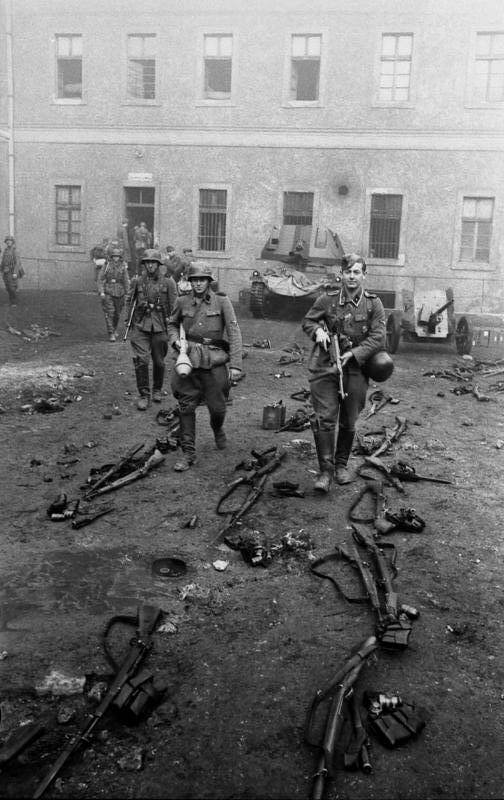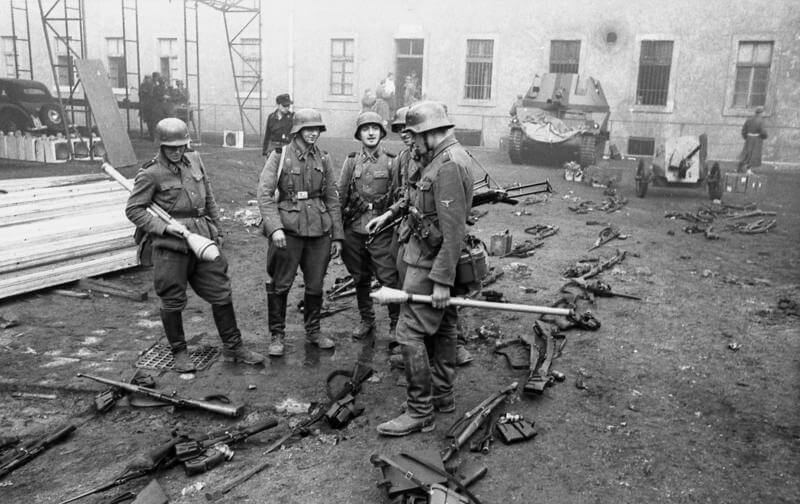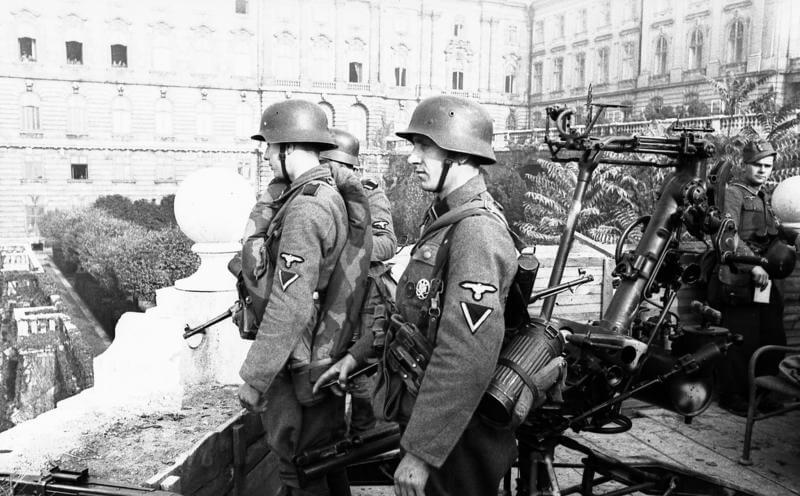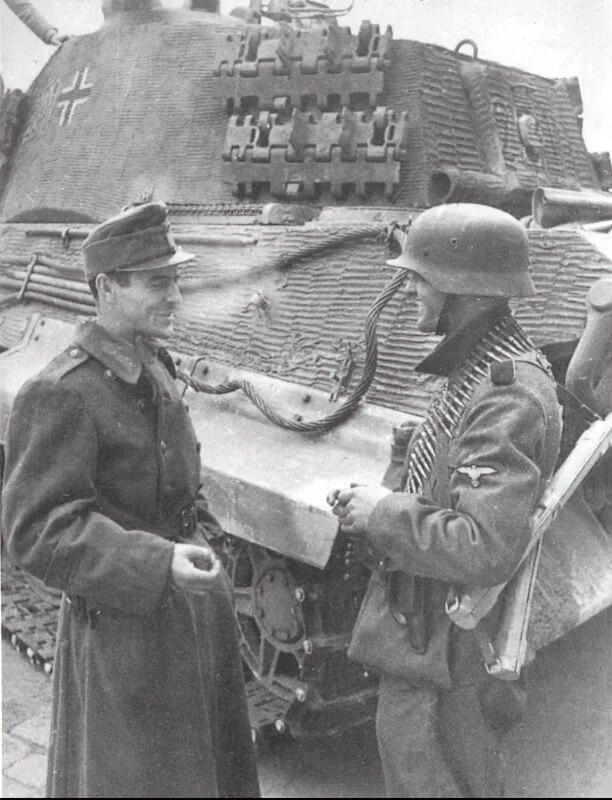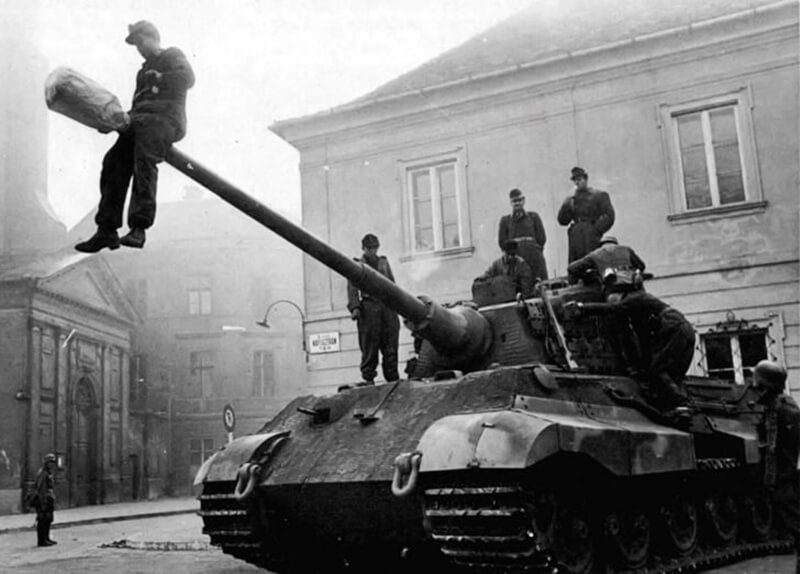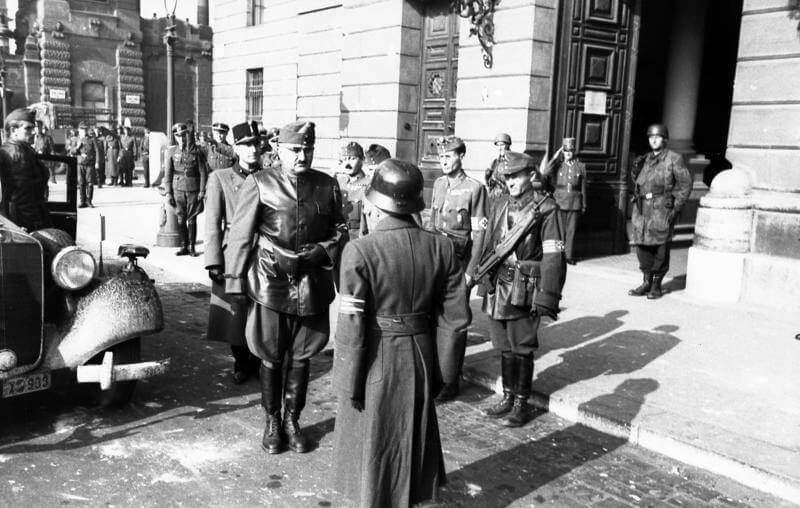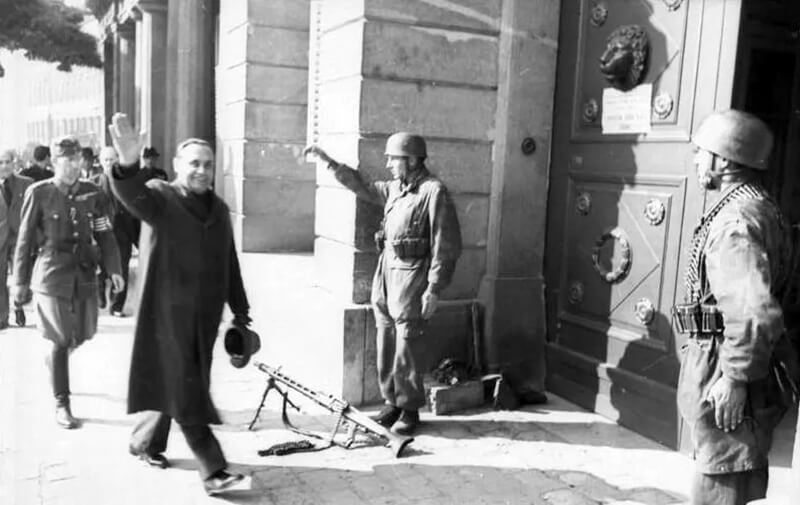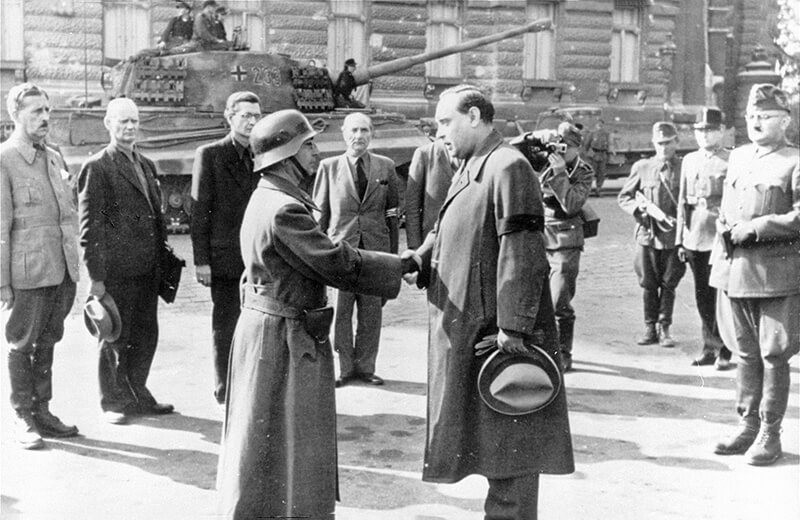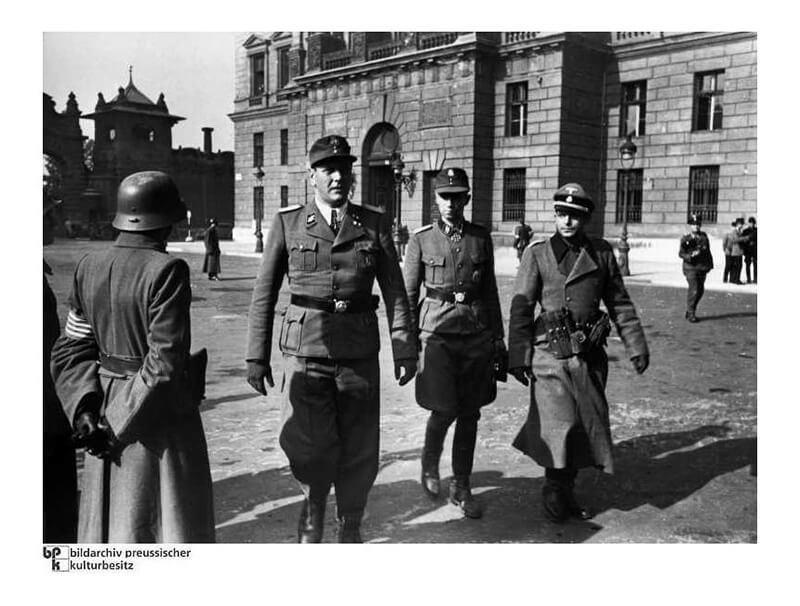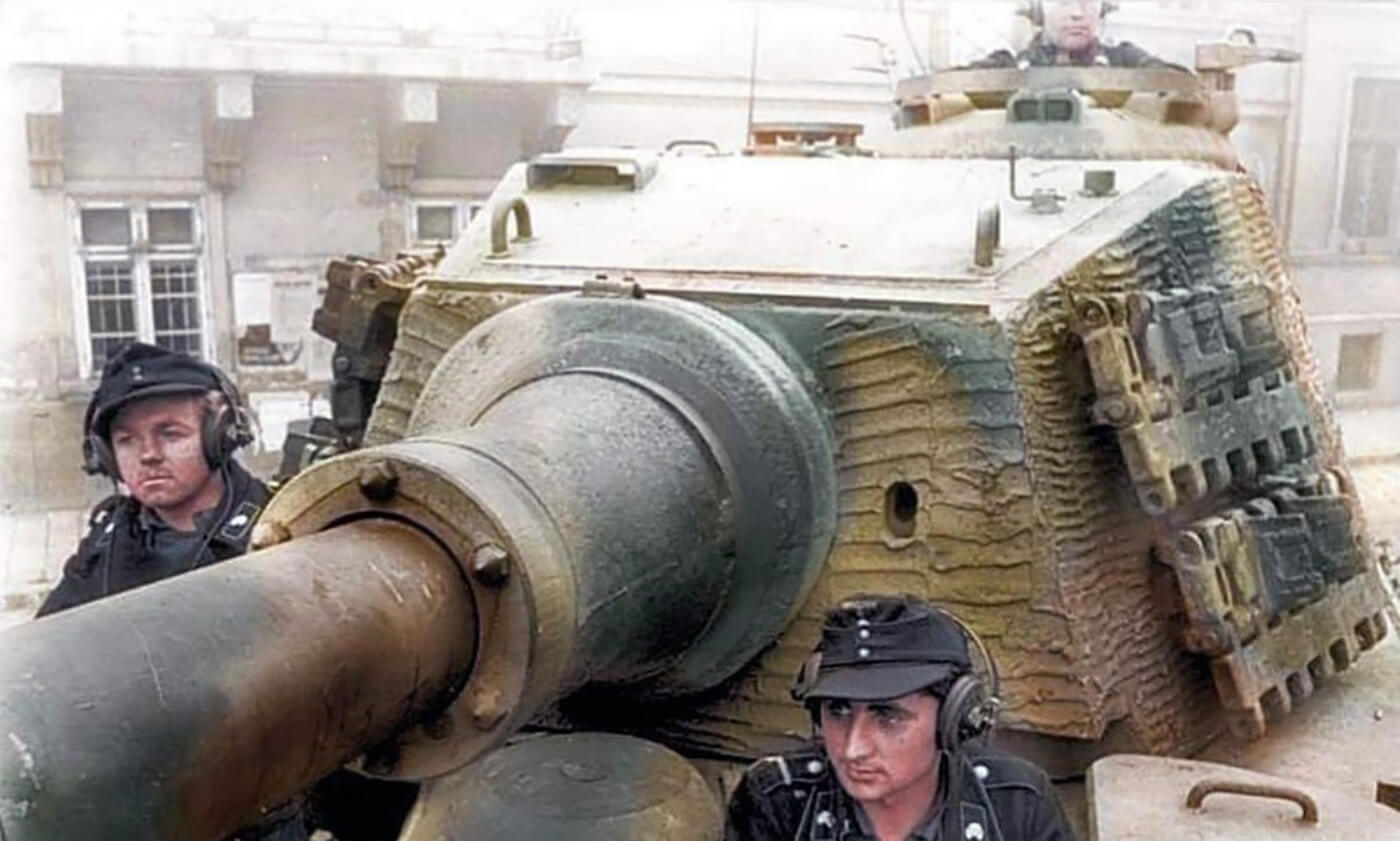| Page Created |
| April 27th, 2023 |
| Last Updated |
| April 29th, 2023 |
| Germany |
 |
| Special Forces |
| SS-Fallschirmjäger-Bataillon 600 SS-Jäger-Bataillon 502 |
| October 15th, 1944 – October 16th, 1944 |
| Unternehmen Panzerfaust/Eisenfaust |
| Objectives |
- to capture Miklós Horthy Jr..
- to attack the Budapest castle hill where Horthy’s palace is located and capture and imprison Horthy.
| Operational Area |
Budapest, Hungary
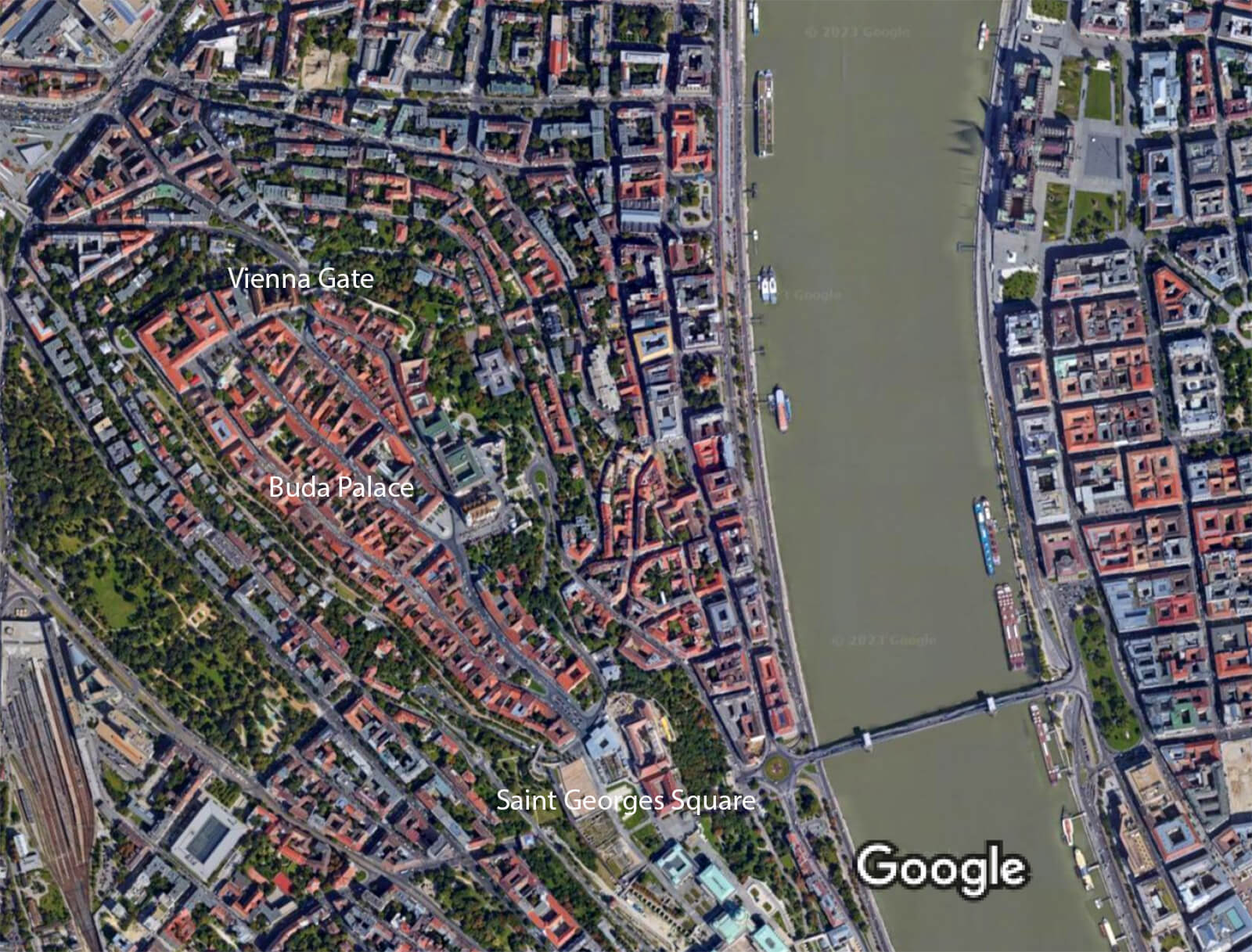
| Unit Force |
- 22. SS-Freiwilligen-Kavallerie-Division
- schwere Panzerabteilung 503
- SS-Fallschirmjäger-Bataillon 600
- SS-Jäger-Bataillon 502
| Opposing Forces |
- Hungarian army
| Operation |
Unternehmen Panzerfaust/Eisenfaust. Following the German occupation of Hungary in March 1944 (Unternehmen Margarethe), German intelligence intercepts communication indicating that the Hungarian Regent is attempting to negotiate a Hungarian surrender or ceasefire with the Soviet Army by his son Miklós Jr. Horthy. Hitler fears that if Hungary surrenders, it will leave Germany’s southern flank exposed. Romania had recently defected and joined the Soviets, which would cut off around one million German troops still fighting against the Soviet advance in the Balkan peninsula. In addition, a Hungarian surrender would take away Germany’s opportunity to exploit Hungary’s manpower, industry, and natural resources.
It is believed that Adolf Hitler assigns Reichsführer SS Heinrich Himmler to plan and carry out Unternehmen Panzerfaust with the goal of either persuading the Hungarian Regent Miklós Horthy to remain a German ally or forcing his resignation. The mission is assigned to Hungarian Höhere SS- und Polizeiführer Otto Winkelmann, who in turn appoints SS-Obergruppenführer Erich von dem Bach-Zelewski as the commanding senior officer for the operation due to his experience in defeating the Warsaw uprising in August 1944 and his position as head of the German Bandenbekämpfung in the Soviet Union.
The decision to conduct the operation in Budapest is likely made in September or early October 1944. Otto Skorzeny is informed about the preplanned operation at around the same time and his task is likely to support Winkelmann and von dem Bach-Zelewski due to his lower rank compared to the other military officials involved and his SS-Jäger-Bataillon 502, which is not strong enough to conduct the operation alone. The focus of Unternehmen Panzerfaust is to attack the Budapest castle hill where Horthy’s palace is located and capture and imprison Horthy.
SS-Obergruppenführer von dem Bach-Zelewski, who is responsible for conducting the operation, commands SS-Standartenführer Zehender to lead the attack. Zehender’s troops included the 22. SS-Freiwilligen-Kavallerie-Division with attached Tiger tanks, the schwere Panzerabteilung 503 the SS-Fallschirmjäger-Bataillon 600, and Skorzeny’s SS-Jäger-Bataillon 502.
Hungarian Höhere SS- und Polizeiführer Winkelmann and his SS police officers, with support from Skorzeny and his men, have to capture Miklós Jr. Horthy, the son of the Hungarian Regent. Skorzeny’s primary task is to ensure Horthy Jr.’s capture and to secure the way to the airport while Winkelmann’s men transport Horthy Jr. to Germany.
Days earlier Horthy’s son, Miklós, via intermediaries, is informed by the German security service, that envoys of Josip Broz Tito of Yugoslavia want to meet with him. Miklós did not arrive at the first planned meeting after he saw suspicious individuals near the proposed meeting place. A second meeting was arranged for a time early on October 15th, 1943, at the offices of Felix Bornemisza, the director of the Hungarian ports on the Danube River.
| October 15th, 1944 |

At 14:00, Horthy makes a national radio announcement declaring that Hungary has signed an armistice with the Soviet Union.
With assistance of Winkelmann’s SS, supporters of the rival Arrow Cross Party-Hungarian take control of the radio station, shortly after Horthy’s broadcast. Effectively launching Unternehmen Panzerfaust.
A party member drafted a counter-proclamation, which is broadcast under the name of the Hungarian army’s chief-of-staff, Vezérezredes János Vörös. The commander and senior officers of the two remaining Hungarian army units in Budapest are either arrested or disappeared, and their units declare their loyalty to the new regime.
Meanwhile, Skorzeny and his men position themself near a house in Budapest where Miklós Horthy Jr. is supposed to have a meeting with Yugoslav representatives linked to Tito’s camp, discussing a potential switch of allegiance to the Russians. Nearby, a truck carrying Horthy’s security personnel is stationed. Two members of Skorzeny’s team approach the house casually, prompting the Hungarian soldiers in the truck to take action and open fire. Skorzeny signals for reinforcements by blowing a whistle, and Hauptmann Von Fölkersam arrives with additional German soldiers. The Hungarian soldiers retreat, and Skorzeny rushes to the floor where Miklós Horthy Jr. is located.
Despite Miklós Horthy Jr attempts to intimidate his attackers, he is overpowered and captured along with his companion, Bornemizza. They roll him into a carpet and secure the road to the nearest airfield to fly him to Vienna. From here he is transported to the concentration camp at Mauthausen.
Skorzeny await the reaction to the kidnapping at his hotel. Initially, Miklós Horthy, the father, expresses his intention to negotiate with the Russians. SS General Bach-Zelewski proposes to destroy Horthy’s residence, the Burgberg, but Skorzeny convinces him that such action would only push Hungary towards the Russian side. Instead, the 22. SS-Freiwilligen-Kavallerie-Division surrounds the area.
| October 16th, 1944 |
At midnight, the German representative Veesenmayer and the German diplomat Rudolf Rahn negotiate with Horthy. The Hungarian Regent Horthy has to either remain on Germany’s side during the war or to resign, while Horthy declares a ceasefire over the radio if he wants to see his son back alive. He agrees to resign and leaves his palace with Veesenmayer 05:30.
Before Horthy leaves, he orders his guarding troops not to defend the Burgberg to ensure no Hungarian and German deaths. However, at least some of Zehender’s troops are not informed about Horthy’s resignation.
Skorzeny’s men, a group of German troops and four Tiger II heavy tanks approach the Vienna Gates of the Burberg and storm the palace at 06:00. At the same time, the SS-Fallschirmjäger-Bataillon 600 penetrates the Burgberg of Horthy’s palace through a tunnel, while all other German forces involved are the blocking forces around the castle hill. Skorzeny and his forces run into minor opposition with Hungarian units who did not receive Horthy’s orders. The Hungarians fight the Germans for some 30 minutes before surrendering. It is fair to say, the Germans capture the Burberg quickly, with minimal casualties. Only seven men lose their lives, and twenty-six are injured. At the same time, the SS-Fallschirmjäger-Bataillon 600 arrives, and together with Skorzeny’s men, they occupy and secure the rest of the palace.
| Aftermath |
Hungary reluctantly fights alongside Germany until April 1945, despite attempting to negotiate a separate agreement with the Soviet Union. The Germans’ response to Hungary’s attempt further diminishes the country’s already weak enthusiasm for the war. As a result, Dálnoki-Miklós, the commander of the Hungarian 1st Army, defects to the Soviets. He advises his fellow countrymen to view the Germans as enemies. However, the commander of the Hungarian 2nd Army, Altábornagy Lajos Dálnoki-Veres, is arrested on order Generaloberst Johannes Friessner, commander of Heeresgruppe Süd before he can follow Dálnoki-Miklós.
Despite assurances from Veesenmayer that Horthy’s son will be released from the concentration camp where he is being held, he remains a prisoner until the end of World War II on May 8th, 1945. Meanwhile, Horthy himself is taken to the Schloss Hirschberg near Weilheim in Germany. He is hold captive by a guard force of one hundred Waffen-SS soldiers. On May 1st, 1945, Lieutenant General Alexander McC. Patch, commander of the US 7th Army, visited Horthy, who is now considered a prisoner of war until he is released on December 17th, 1945, seven months later.
| Multimedia |
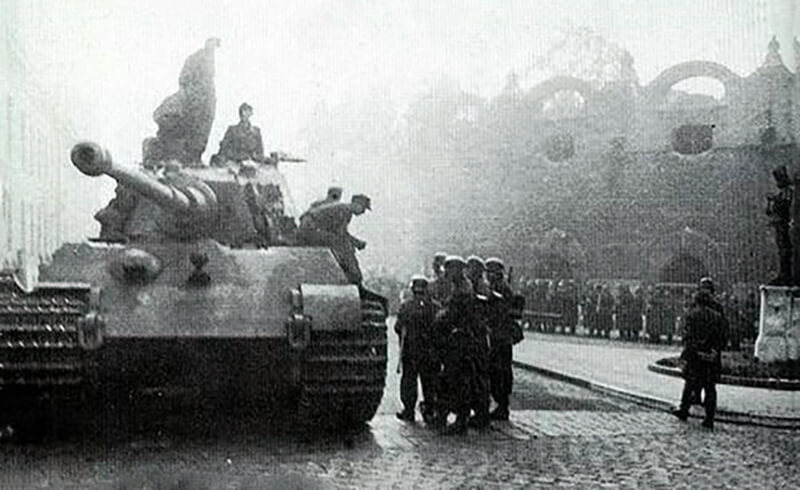
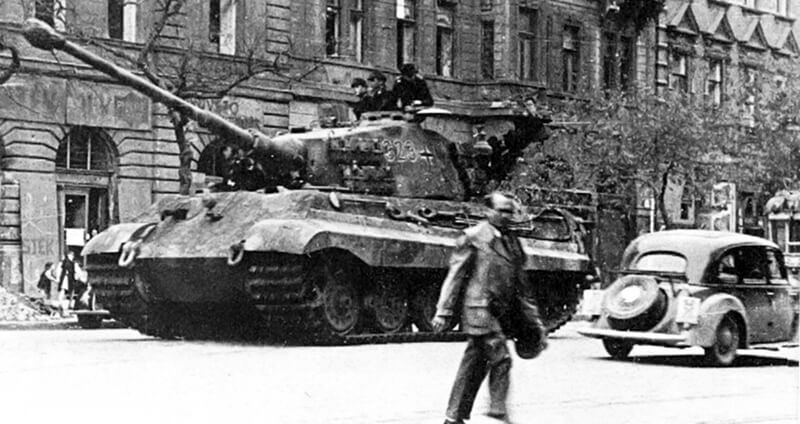


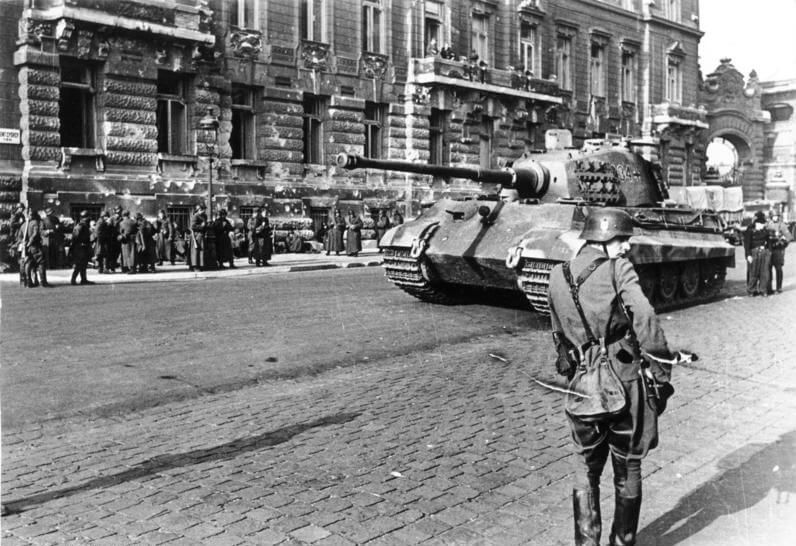
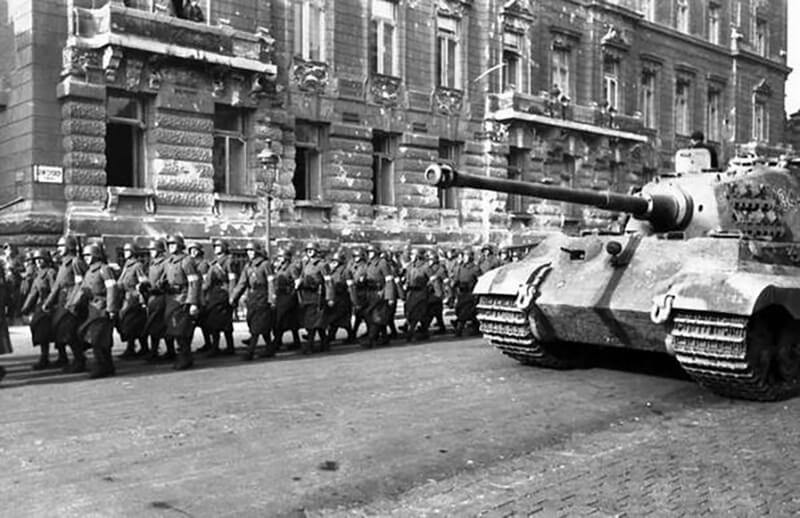
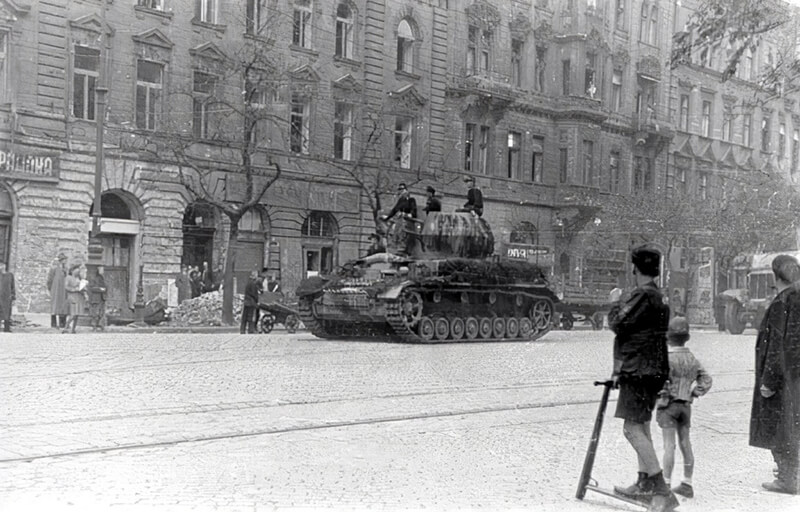
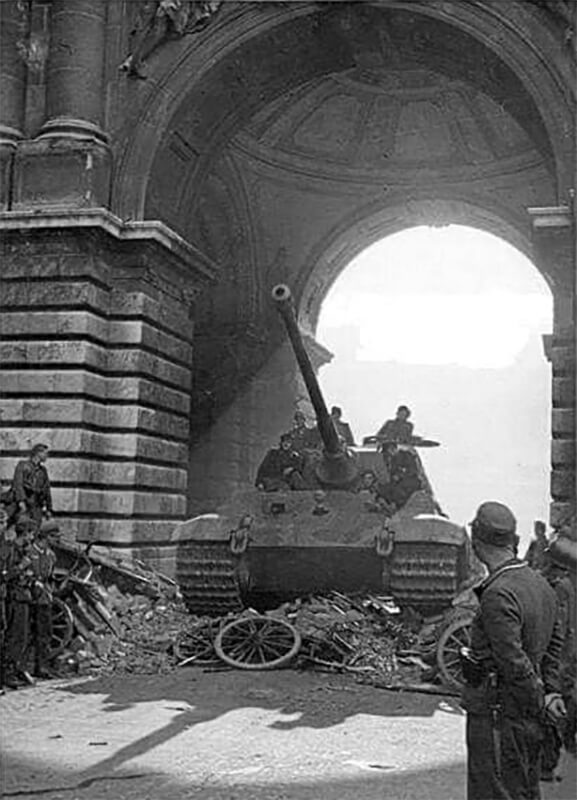
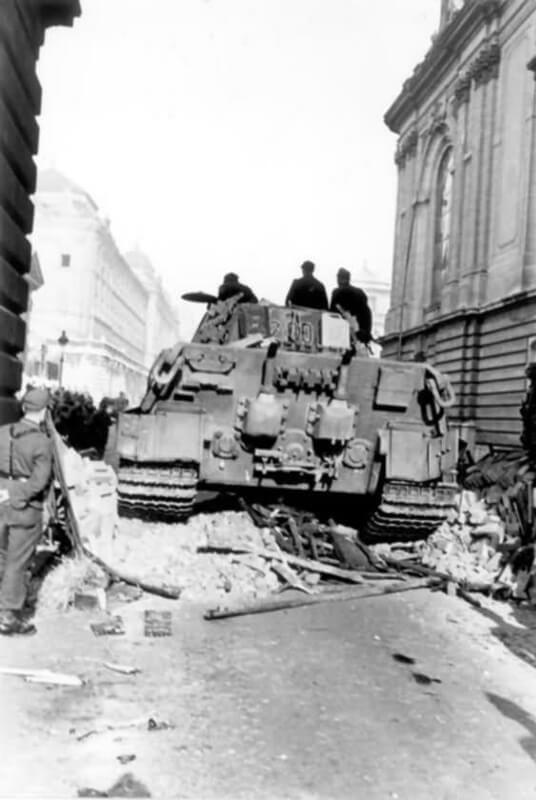
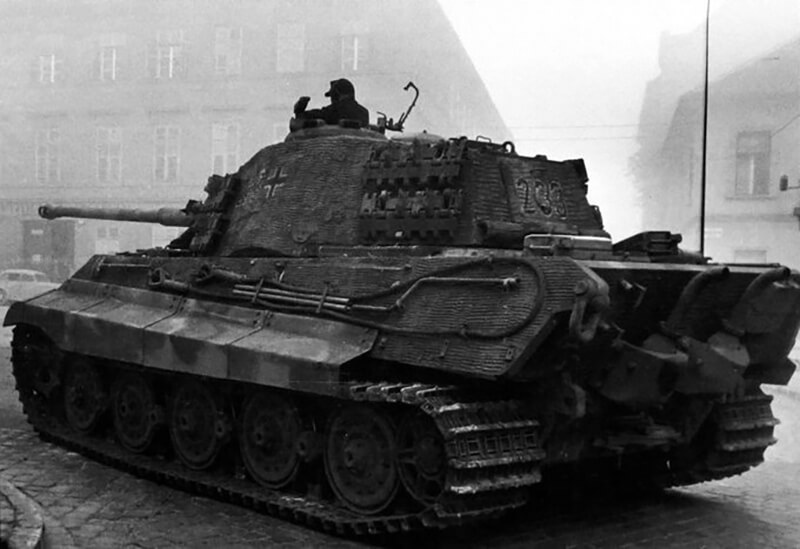
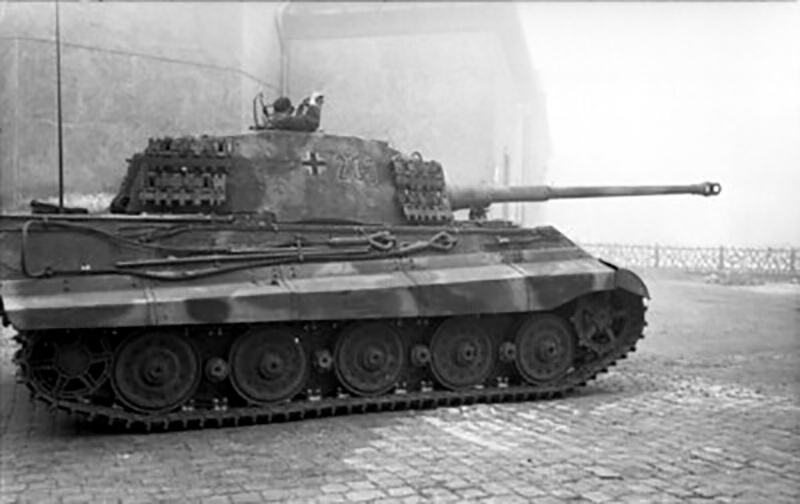
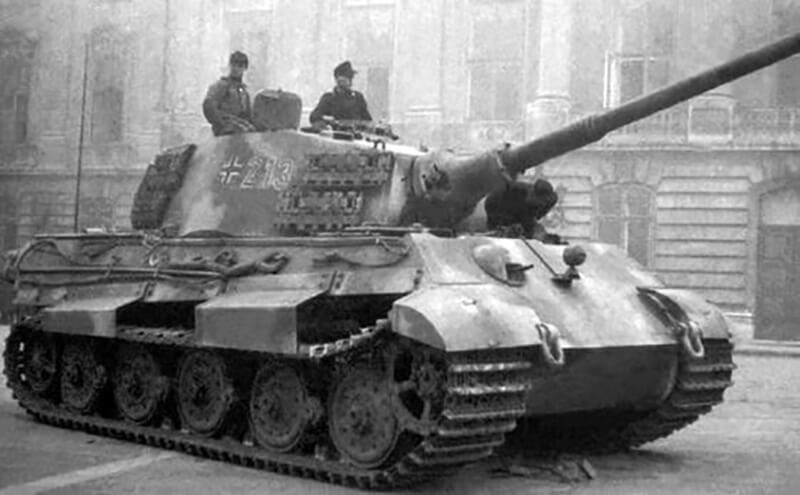
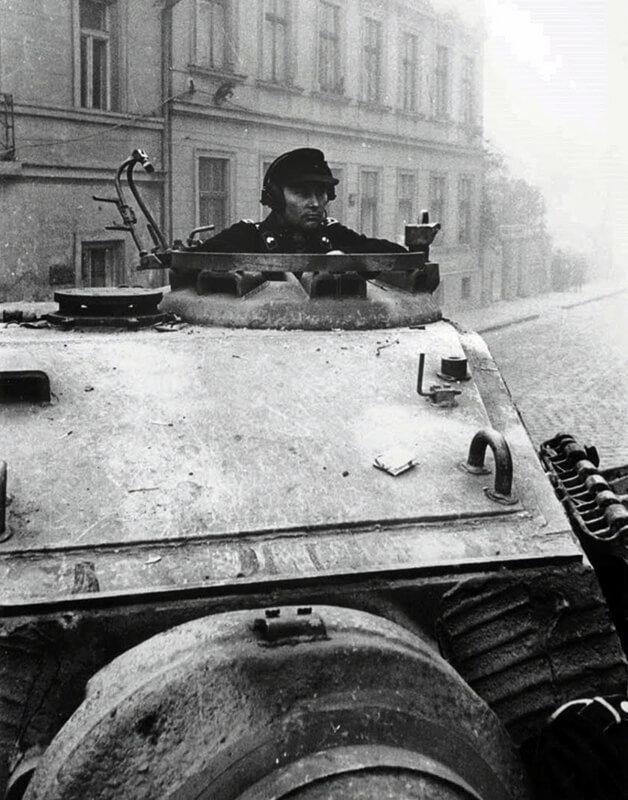
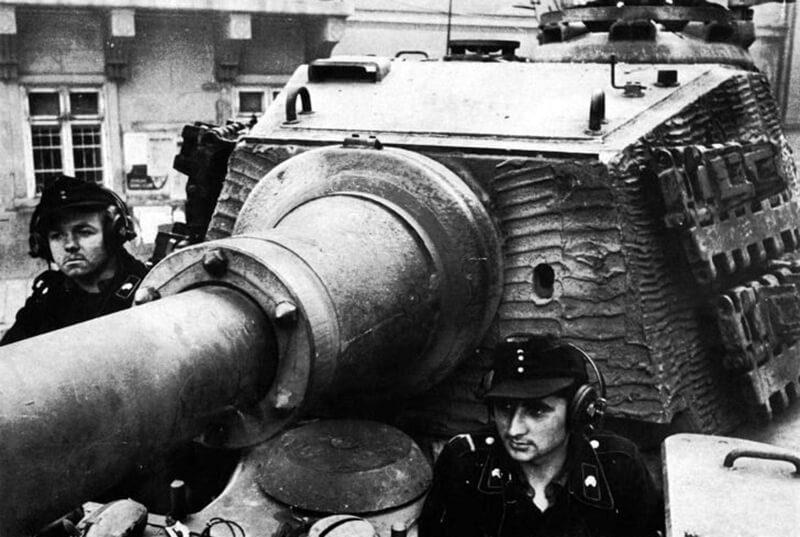
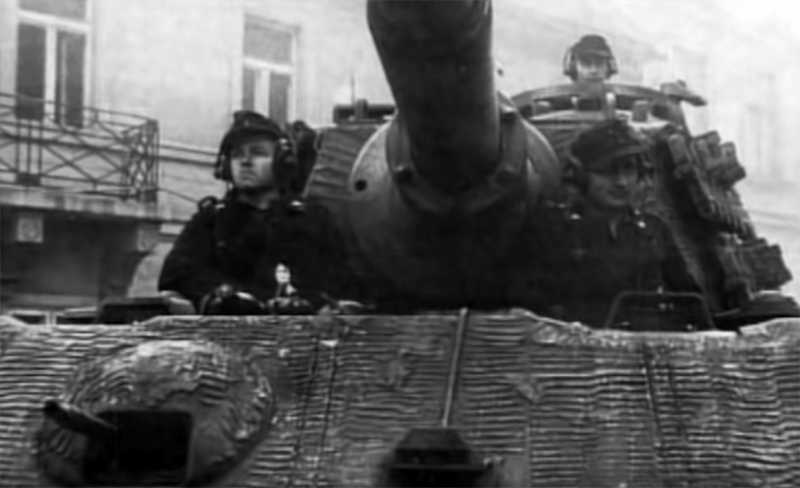
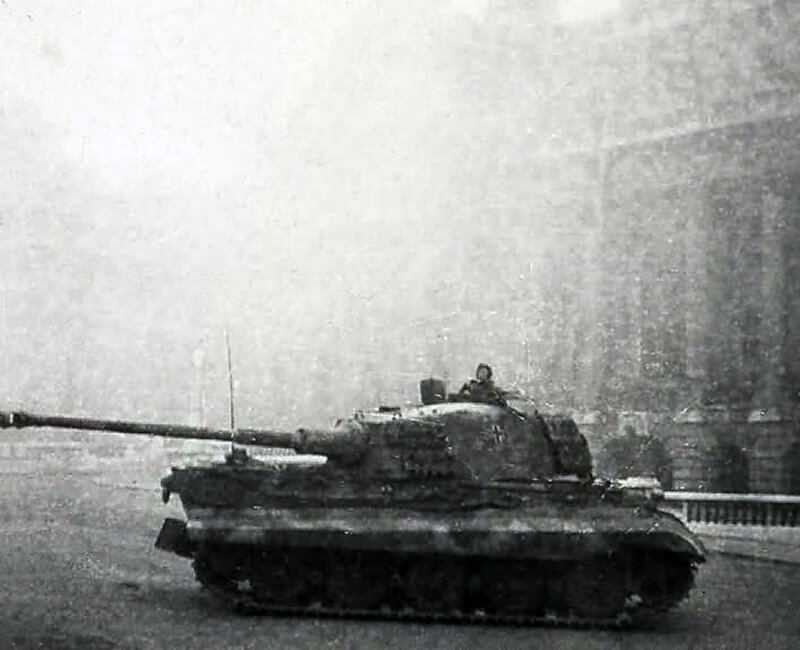

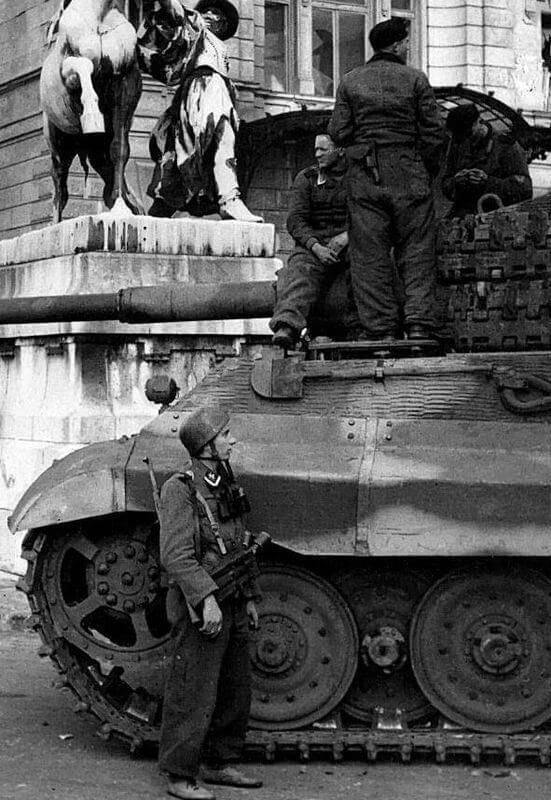
| Aftermath |
